World Sight Day 2023: #LoveYourEyes!

Thursday 12th October 2023 is World Sight Day!
The World Health Organisation’s World Report on Vision has cemented eye health as critical to achieving the Sustainable Development Goals. Eye health impacts education, employment, and quality of life, just to name a few. However, change doesn’t just happen in high office.
Here at MedShr, we are building a community of healthcare professionals across the world with an interest in ophthalmology. We want to offer a global platform for doctors, nurses and other HCPs to discuss their experiences and share their knowledge around various ophthalmological conditions, with the primary goal of improving clinical outcomes and ultimately saving lives.
In light of World Sight Day 2023, we are taking a look at the WHO World Report on Vision, and sharing some of the most common ophthalmological conditions encountered in clinical practice worldwide.
Introduction from the World Report on Vision
Across the world, over 2.2 billion people have a vision impairment. Of these, at least 1 billion have a vision impairment that could have been prevented or is yet to be addressed. In a global society built on the ability to see, vision impairment has far-reaching consequences for individuals, their families and carers.
Vision impairment occurs when an eye condition affects the visual system and one or more of its functions. Conditions which cause vision impairment and blindness, such as cataract, glaucoma and refractive error, are the main focus of prevention and other eye care strategies. Nevertheless, diseases which do not necessarily impact on vision, such as dry eye and conjunctivitis, are still hugely important and should not be overlooked. Such conditions provide some of the most common reasons for presentation to eye care services worldwide, and give rise to significant personal and financial hardships secondary to the associated treatment needs.
The burden of eye conditions and vision impairment is not borne equally across the world; it is often much greater in low- and middle-income countries, among rural and disadvantaged communities, and in older people and women. The serious consequences of eye disease amongst these populations can be mitigated throught the provision of universal, timely access to quality eye care and rehabilitation.
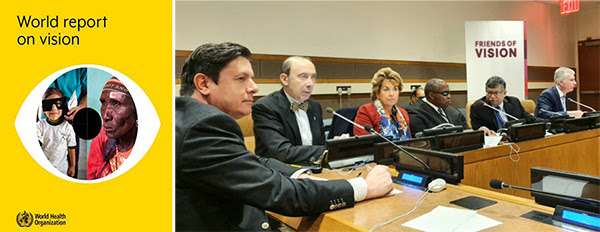
An Introduction to Common Eye Conditions
Here's a very quick introduction to some of the most common eye conditions that affect patients all over the world. How many of these have you heard of? Would you know how to manage these diseases? Keep reading to find out how to prevent and treat conditions like these later on in this article.
Eye conditions which commonly cause vision impairment and blindness...
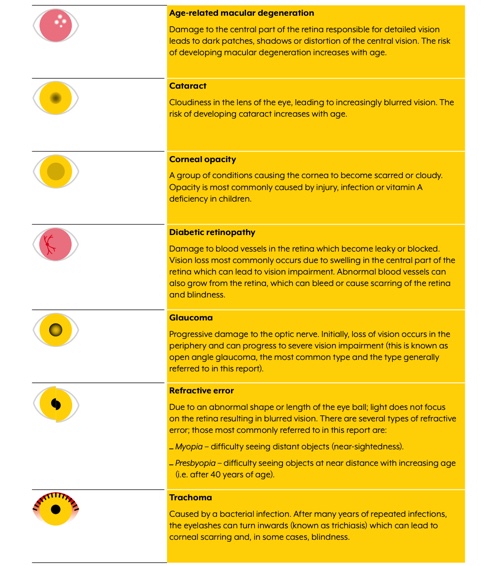
Eye conditions which do not typically cause vision impairment...
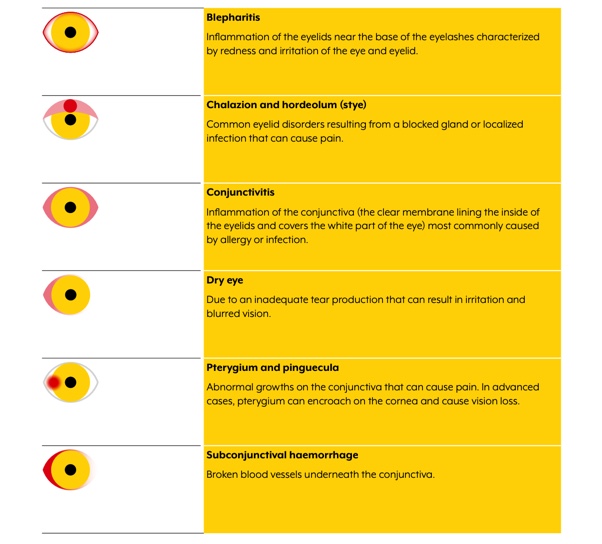
How to measure and classify visual impairment: An introduction to visual acuity
Visual acuity is a simple, objective, and non-invasive measure of the visual system's ability to discriminate between two high contrast points in space. This short introduction explains the role of visual acuity measurements in the assessment of conditions which cause visual impairment and blindness, and breaks down how to interpret results for healthcare professionals.
Distance visual acuity is commonly assessed using a vision chart at a fixed distance (commonly 6 metres / 20 feet). It is presented as a fraction, and refers to the smallest line of text on the chart that the patient is able to read. The fraction numerator refers to the distance at which the chart is viewed, and the denominator is the distance at which a “healthy” eye is able to read that line of the vision chart. For example, a visual acuity of 6/18 means that, at 6 metres from the vision chart, a person can read letters that someone with normal vision would be able to see at 18 metres. “Normal” vision is taken to be 6/6.
Near visual acuity is measured using a small handheld chart containing paragraphs of text of a standard size, and is important when considering a patient's ability to read and write. Near visual impairment is commonly classified as a near visual acuity less than N6 (where 'N' means 'near', and '6' the print size).
Have a look at this table which shows you how visual acuity is used in practice to classify the severity of vision impairment.

Management of Common Eye Conditions
Let's take a look at some of the most common eye conditions among adults identified in the WHO World Report on Vision, and consider effective health promotion, prevention and treatment strategies.
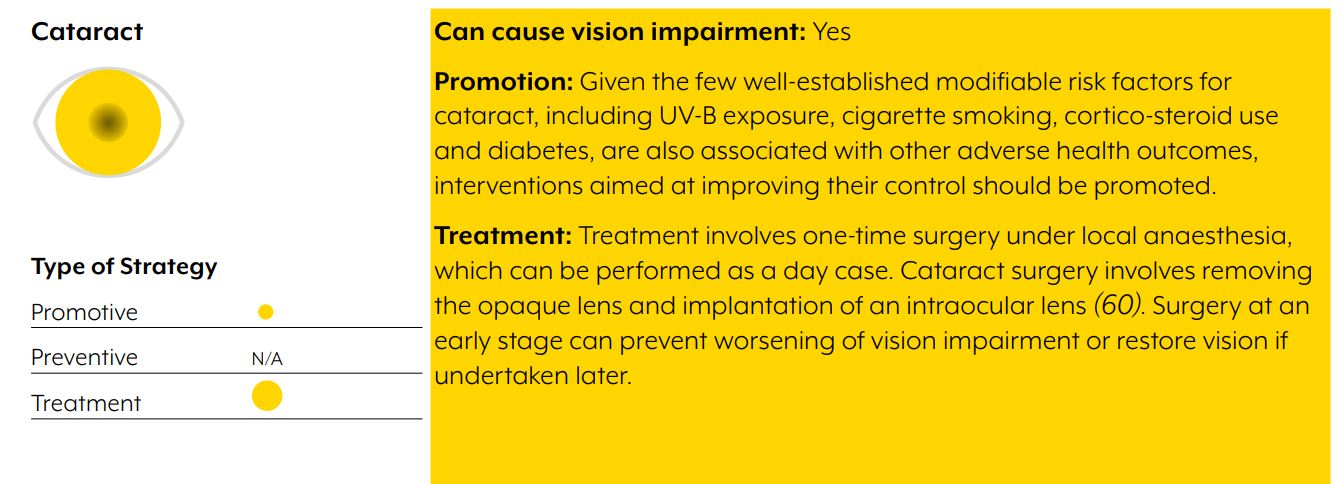
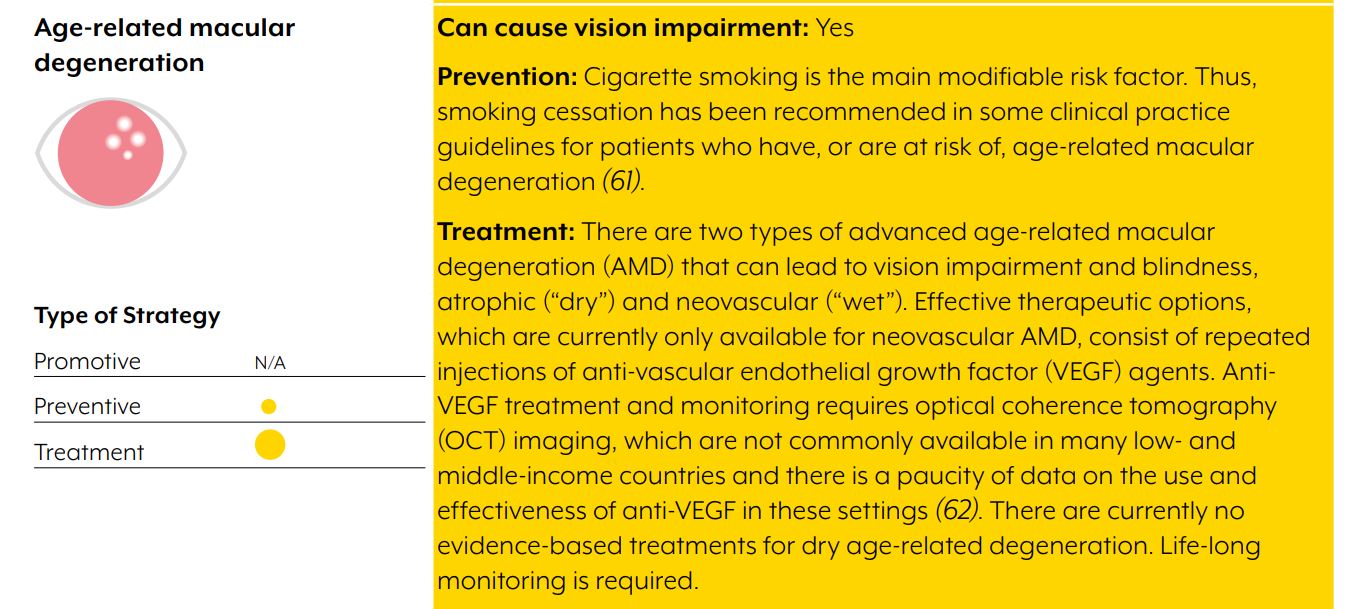
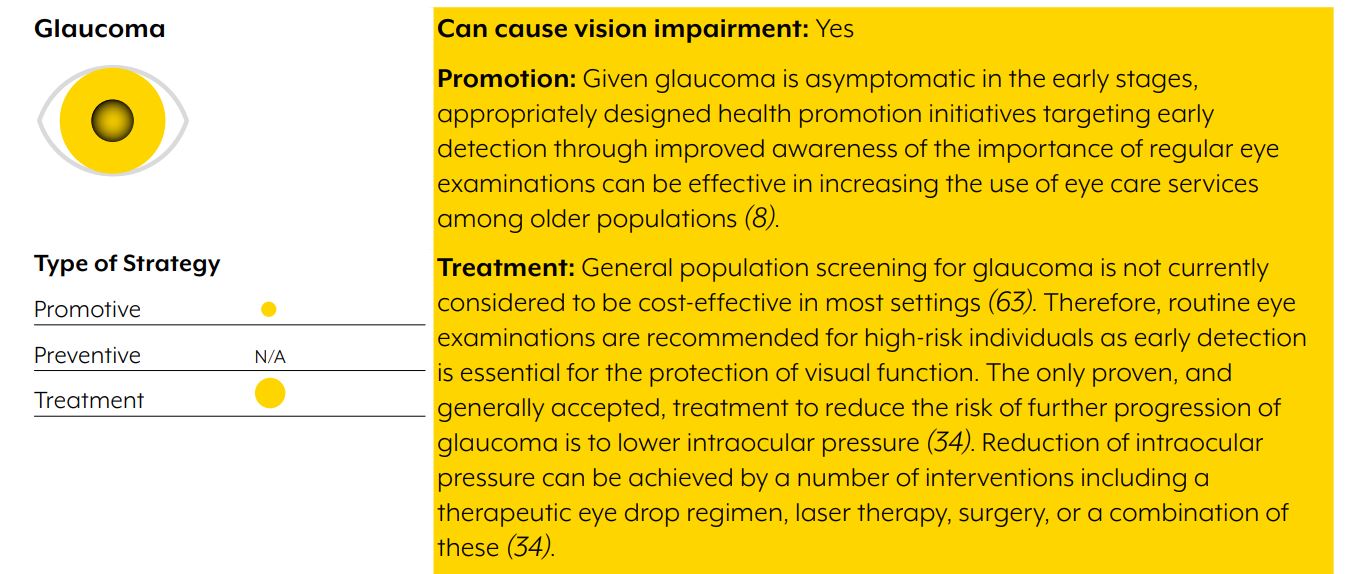
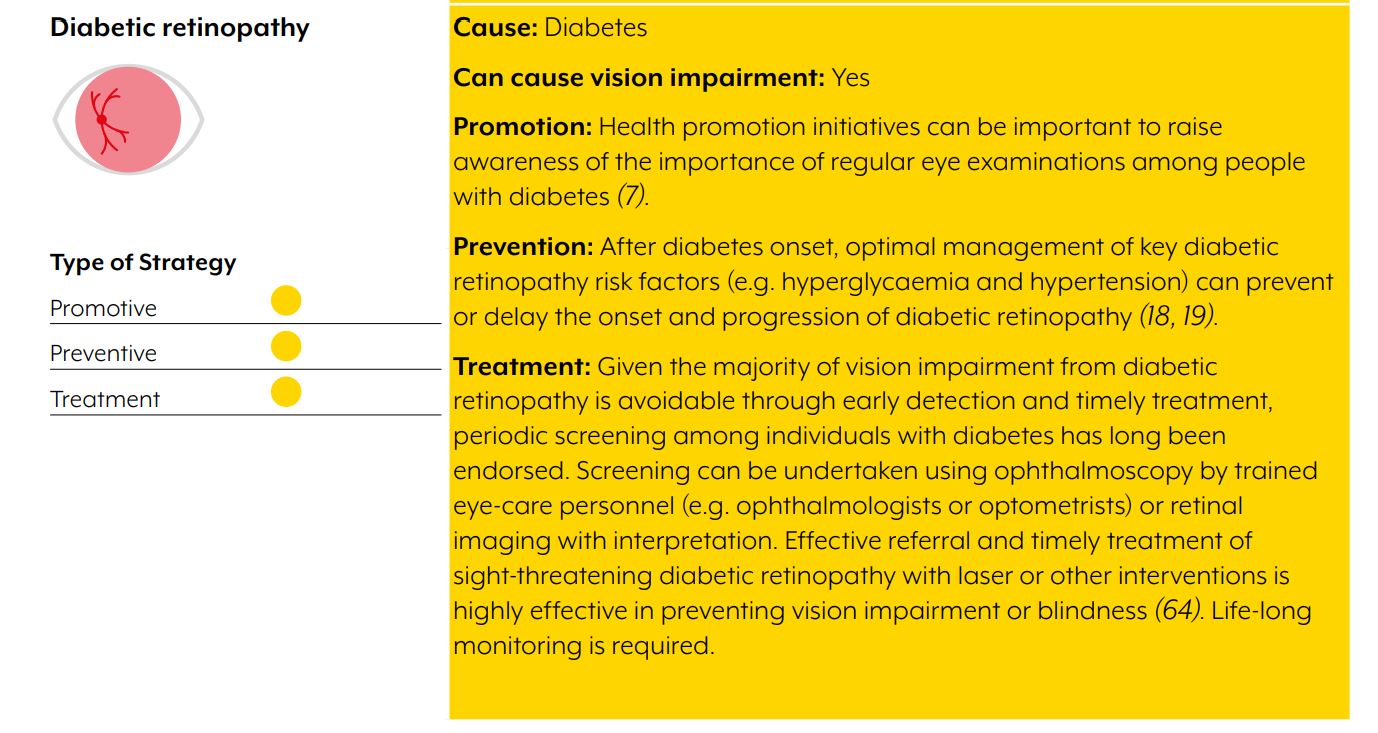
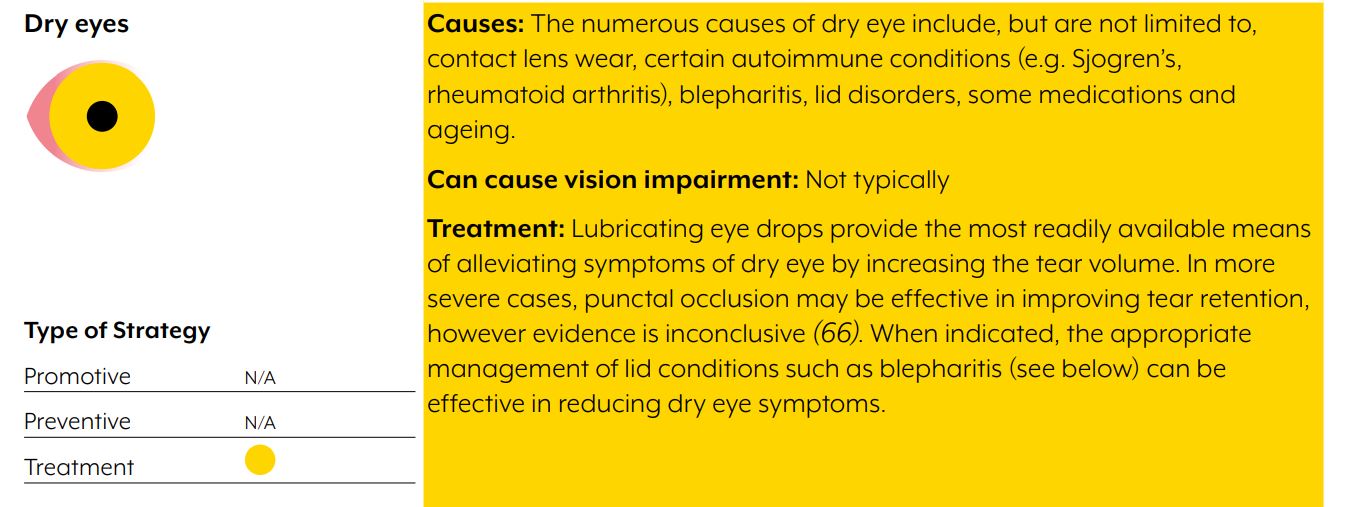
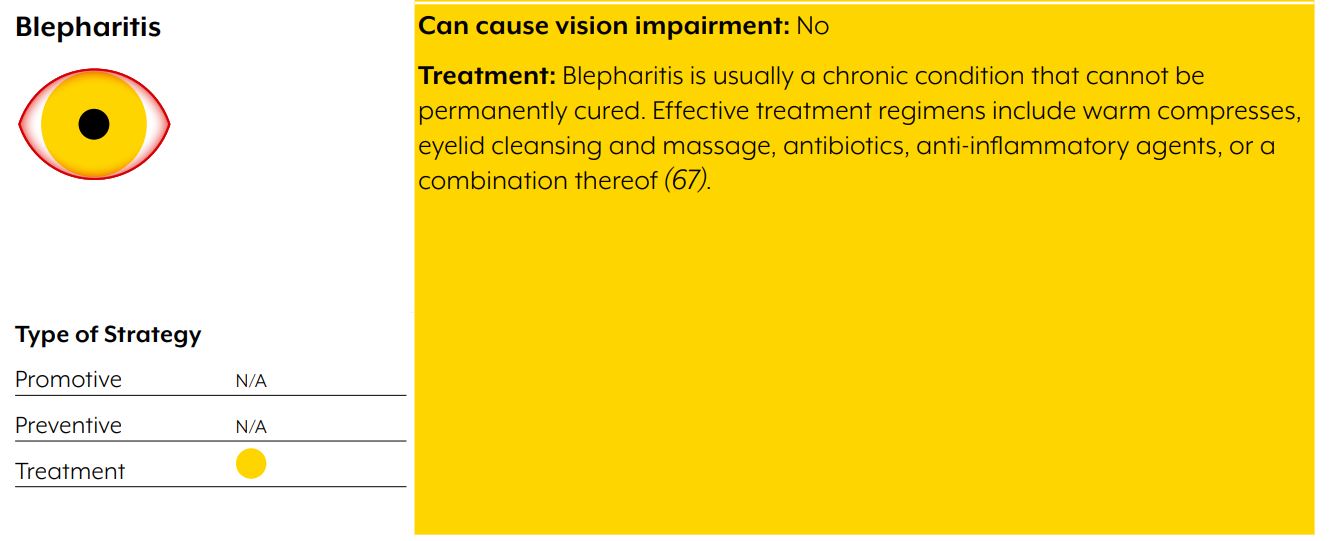
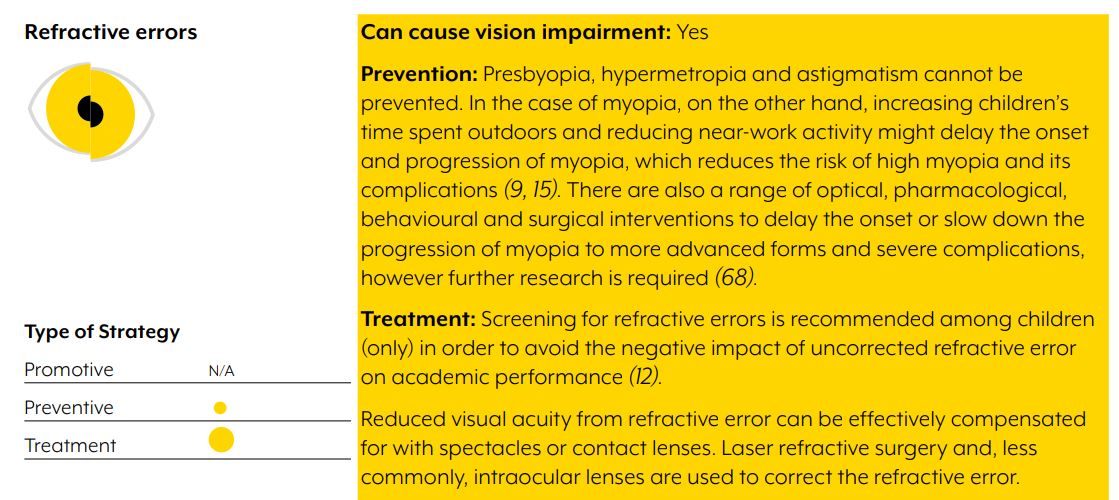


WHO World Report on Vision Conclusion: What can be done?
The WHO World Report on Vision concludes that health systems face unprecedented challenges in meeting the current and projected eye care needs of the world's population. It states that integrated, people-centred eye care and rehabilitation has the potential to accelerate action and meet these challenges. In order for this to happen, the report recommends five important actions:
1. Make eye care an integral part of universal health coverage.
2. Implement integrated people-centred eye care in health systems.
3. Promote high-quality implementation and health systems research complementing existing evidence for effective eye care interventions.
4. Monitor trends and evaluate progress towards implementing integrated people-centred eye care.
5. Raise awareness and engage and empower people and communities about eye care needs.
For more information and to explore related material, visit the MedShr Global Health Ophthalmology Case Discussion Group and check out our Ophthalmology Learning Modules!
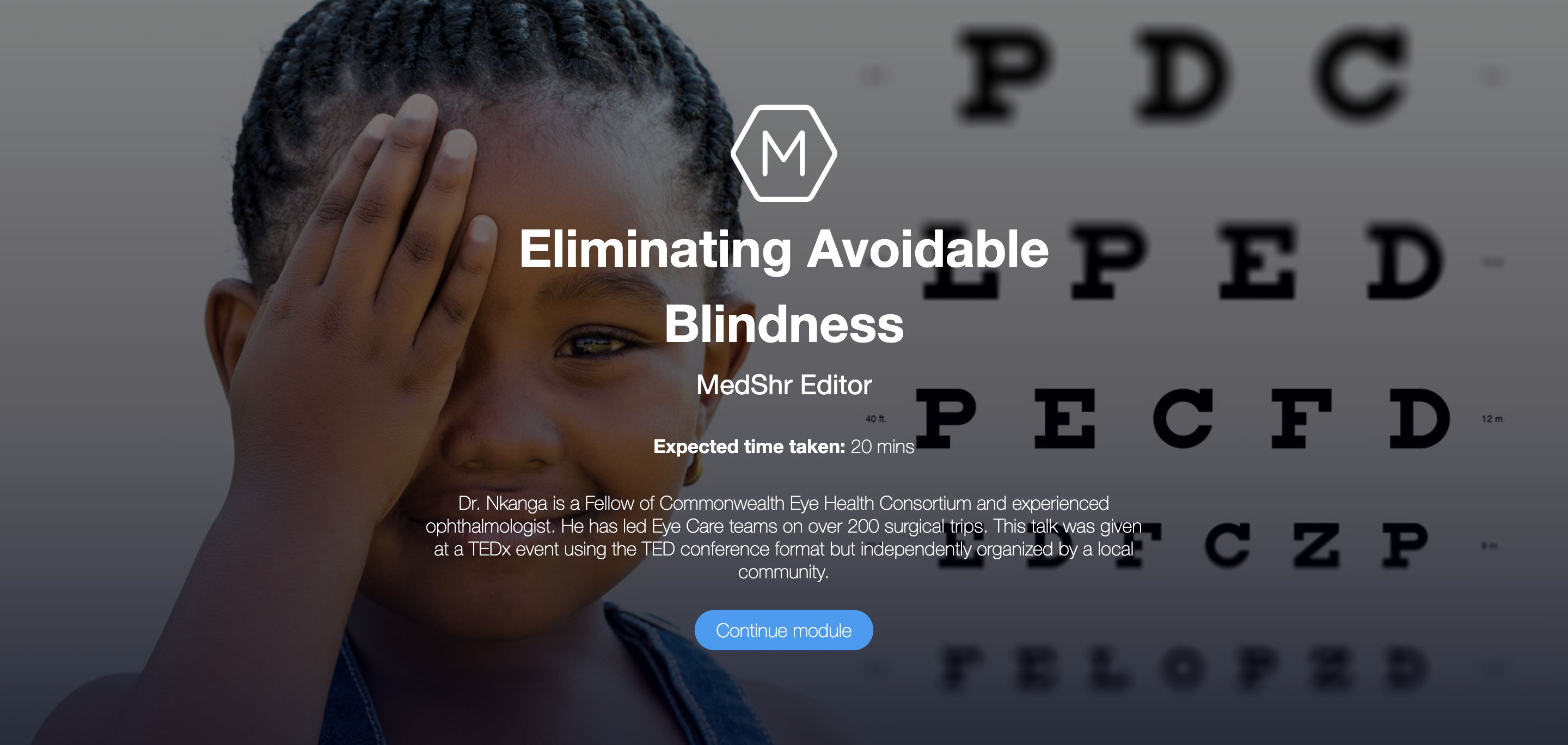
#LoveYourEyes!
Loading Author...
Sign in or Register to comment